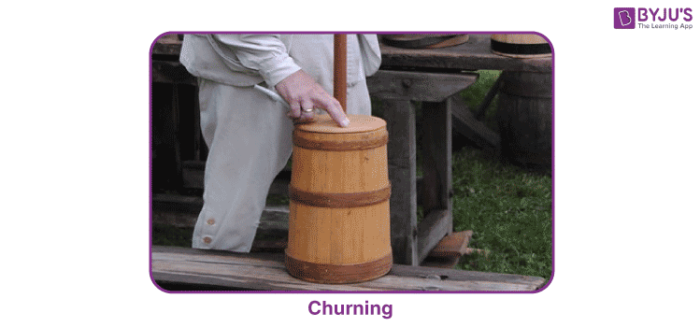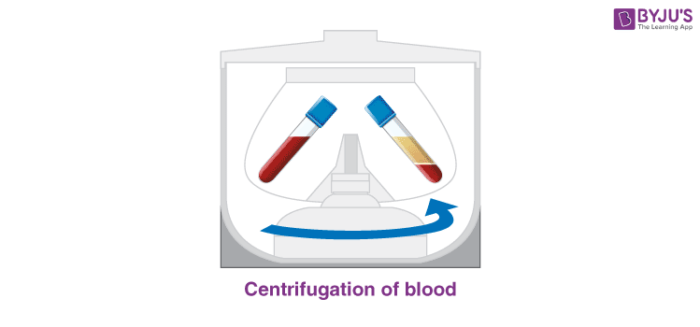Let us know about the centrifugation and churning process. We use many milk products; cream, butter, cheese etc. Ever wondered how these milk products are made? We have seen at home or in pictures, a pot full of milk being agitated with a plunger-like device, usually a cylindrical stick to separate cream from milk. This process is carried out to separate cream from milk which later may be used for making butter or solid cream. This process of agitation of milk is termed as churning.

Table of Contents
Churning
The process of churning is defined as the agitation of cream to form butter. Earlier, only manual techniques were available for this process. For example: using the traditional churner as shown in the above image, where a pot full of milk cream was fitted with a plunger, which was then rotated to create agitation. Another hand-powered device is also used where to and fro motion is established instead of rotational.

The process of churning is not very efficient as it takes a lot of time and labour. So, for larger quantities, the process of centrifugation is carried out. In churning, the plunger is rotated and the container containing the mixture remains constant, whereas in a centrifuge, the container is made to rotate, such that centrifugal force directly acts on the components.
Centrifugation
Centrifugation is the process that uses centrifugal force for the separation of two liquids in a mixture. In this process, the denser component of the mixture migrates away from the axis and the lighter component migrates towards the axis.

The process of centrifugation is carried out in a centrifuge, as shown in Fig 7.
Let us understand this process with the example of milk, as the tubes containing the milk are rotated, the heavier milk is pulled outward against the wall, whereas, the lighter cream is collected in the middle. Both the components are then collected separately.
This method is extensively used to collect cells, precipitate DNA and purify virus particles in the medical field.
Frequently Asked Questions – FAQs
What is the principle of centrifugation?
A centrifuge operates by using the sedimentation principle- Here the substances are separated based on their density under the influence of gravitational force. When spun rapidly, lighter particles stay at the top and heavier particles go to the bottom during centrifugation.
How does the centrifuge separate mixtures?
The components of heterogeneous mixtures are detached by centrifugation. That comprises liquids in liquids, solids in fluids, and gases in solids and liquids. In order to transfer bulky sections to the outside of the pipe, centrifugation uses centrifugal energy. It allows the solid to settle more easily and completely.
What is the centrifuge used for?
Centrifuges work by separating out two materials with different densities. Centrifuges are used in various laboratories to separate fluids, gases or liquids based on density like the separation of different constituents of blood, immiscible liquids, wastewater sludge etc.
What are the types of centrifugation?
For splitting ions, there are two types of centrifugal techniques: differential centrifugation and centrifugation of density gradients. It is further possible to separate density gradient centrifugation into rate-zonal and isopycnic centrifugation.
What does centrifuge mean?
A centrifuge is a system that separates the component parts of a liquid or fluid (and even gases) using centrifugal force. This is done by rotating the fluid in a bottle at high speed, thereby separating fluids of varying densities (e.g. milk cream) or liquids from solids.
To learn more about this topic, download BYJU’S – The Learning App to Google Play Store and watch interactive videos. Also, take free tests to practice for exams.


Comments